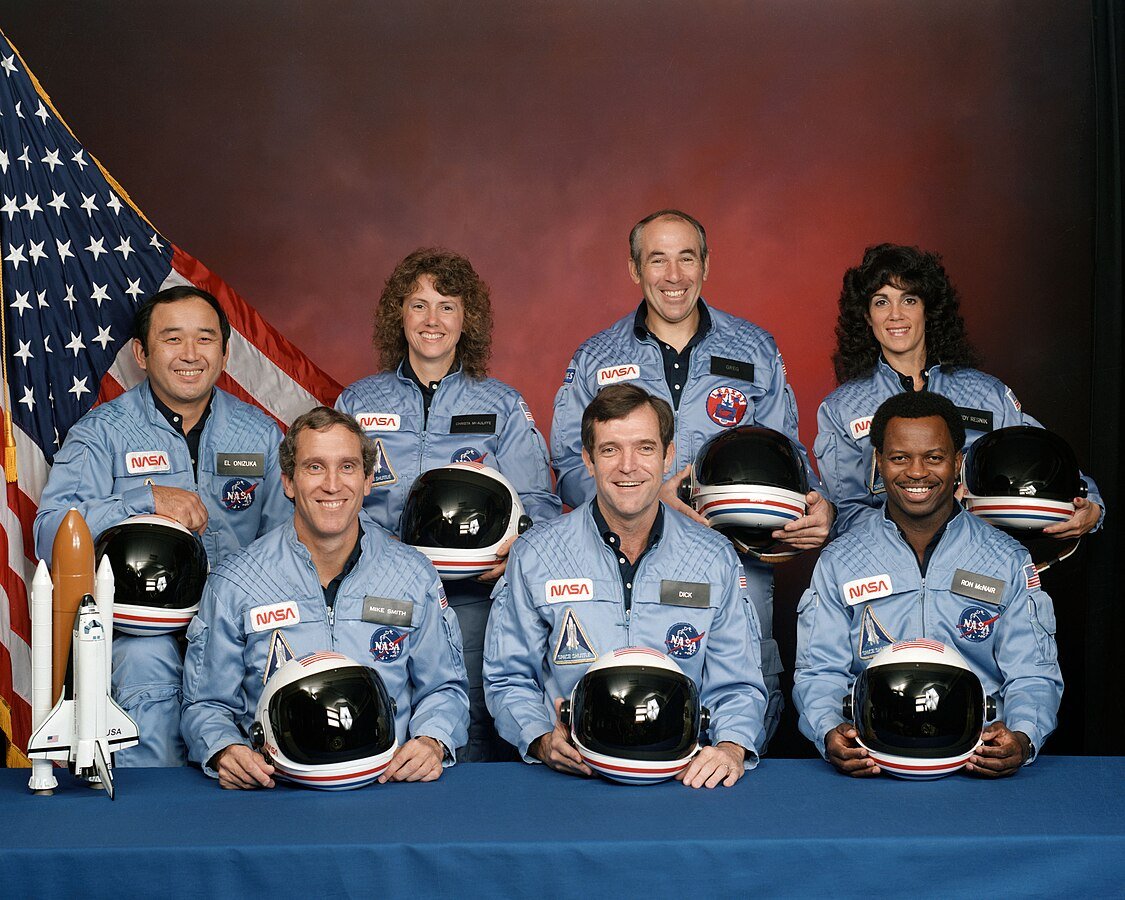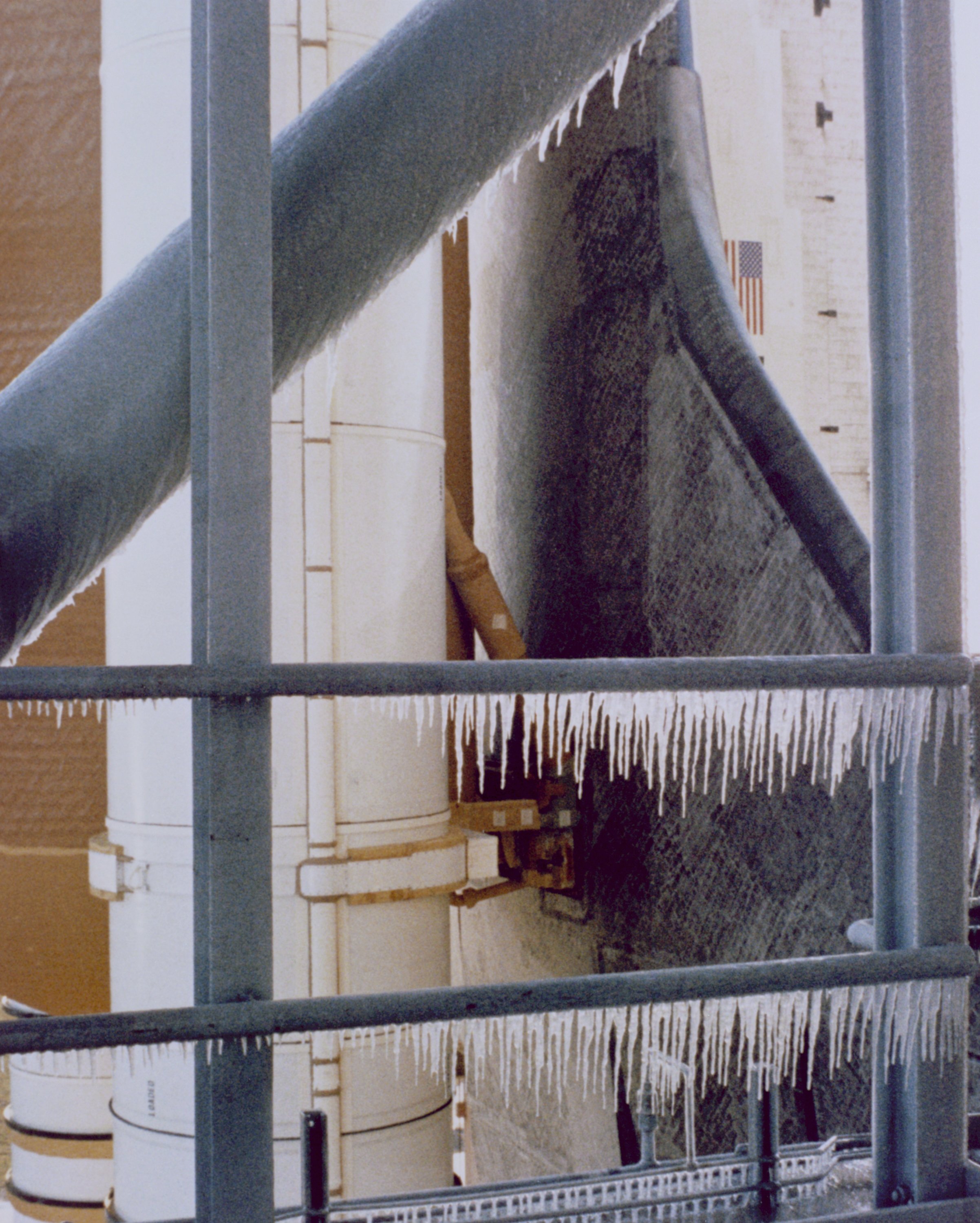Apollo I, Challenger, and Columbia: A Retrospective
Apollo I, Challenger, and Columbia: A Retrospective
Corinne Moore, Technical Business Development Lead
5 minute read
Every year in late January, a somber note falls at NASA Johnson Space Center (JSC) for the Day of Remembrance, honoring the fallen heroes from the Apollo I fire, Challenger, and Columbia disasters. While I was at NASA, it was clear that these disasters and the lessons we learned were given the utmost importance. One of the first things we were shown during our mission control training was that in every control room and place where decisions were made, the three mission patches for each catastrophic event hang by the door, both as a reminder and a warning to hold safety and accountability above all else. Today, in honor of those lessons, we’ll be looking at each event for wisdom we can take forward as the next generation’s leaders of spaceflight.
Apollo I Fire
(Apollo I Prime Crew, Left to Right: Edward H. White II, Virgil I. "Gus" Grissom, and Roger B. Chaffee, NASA)
On January 27, 1967, the Apollo I crew entered the Command Module to perform a “plugs-out” test, which would run the crew through a practice countdown sequence. Several hours into the test, the wiring on the interior of the module sparked, creating a fire that would claim the lives of all three astronauts inside: Edward White, Virgil "Gus" Grissom, and Roger Chaffee. If you’re like myself, you’re probably asking similar questions to: How could this happen? Why did the fire spread so fast? Why didn’t they evacuate the capsule? The answers to those questions are what helped create the strict and controlled safety environment attitude that is still prevalent at NASA today.
We’ll start with the fire itself. The Command Module’s interior wiring was not wrapped and provided the flammable source for the fire to start. Another factor was that after several hours of testing the crew was sitting in a small area completely filled with pure atmospheric oxygen. This is how the fire was able to spread so quickly and take their lives in about 30 seconds. The next issue was the hatch door that was only able to open inward and had latches that required a ratchet to open. In a perfect scenario, it would take a minute and a half to open the door. On the day of the fire, due to heat and smoke, the door couldn’t be opened for five minutes, long after the crew perished.
Like most disasters, this didn’t occur in a scenario where no one saw any problems and thought everything was fine. The crew had frequent complaints about the module not being ready. Grissom himself, realizing he wasn’t being heard by management, actually brought in a lemon from a tree in his yard and hung it on the spacecraft as a show of protest. Alongside the many safety regulations that are now standard (reduced flammable materials on spacecraft interior, evacuation routes, oxygen masks, and use of 60% oxygen and 40% nitrogen at 16 psi), one of the biggest takeaways is that you have to be willing to listen to the people in the trenches. No one knows how things work better than the ones doing the work, and it’s more important to set aside pride, project timelines, and political agendas if it means increased safety and saving lives.
Challenger
(Challenger Crew STS-51L: Michael J. Smith, front row left, Francis R. “Dick” Scobee, Ronald E. McNair; Ellison S. Onizuka, back row left, S. Christa McAuliffe, Gregory B. Jarvis, and Judith A. Resnik, NASA)
Despite some close calls (Apollo 13), it would be 19 years and a day before NASA experienced another disaster. On January 28, 1986, Challenger flight STS-51L launched from Cape Canaveral. This flight had the eyes of the nation, as Sharon Christa McAuliffe, a high school teacher and the first teacher planned to go to space, was part of the crew. It only took 73 seconds after liftoff for all telemetry to be lost and news stations all over the country broadcasted the destruction of the Challenger craft, with a total loss of her crew, leaving those on the ground wondering what could have possibly gone wrong. The truth will always come out, and here it certainly did. Due to unrealistic schedule goals and programmatic pressure to perform 50+ launches per year, there was significant programmatic pressure for Challenger to launch and it had to happen quickly to maintain schedule. On the day of the launch temperatures were below freezing (notably an odd occurrence for Florida), which was already known to cause issues with O-ring integrity inside the solid rocket booster. Because the O-ring failed to seal fully, as could have been expected based on known experience, pressurized gas was released from the fuel tank and caused the craft to be torn apart by aerodynamic force.
Unlike the starting days of spaceflight, this particular tragedy is one that carries a different kind of significance. It wasn’t purely a failure of technology or design that killed these seven people, it was normalizing deviation, organizational silence, and ignoring subject matter experts who warned against flying in the given conditions that lead to the tragedy. Sadly, this would not be the last time that ignoring the guidance of engineering experts would result in loss of life.
Columbia
(Columbia, STS-107 Crew: David M. Brown, Rick D. Husband, Laurel B. Clark, Kalpana Chawla, Michael P. Anderson, William C. “Willie” McCool, and Ilan Ramon , NASA)
The most recent, and I hope last, NASA disaster we have to discuss is Columbia STS-107, which failed to land on February 1, 2003, killing all onboard. This accident led to the shuttering of the space shuttle program for good. Foam insulation shedding from the fuel tank during launch was a known issue, but hadn’t caused any problems in the prior 27 launches. This time, however, 82 seconds into flight the foam struck the left wing at a velocity of 416 to 573 miles per hour and formed a hole. This didn’t prevent Columbia from getting to space and operating for a full 16 days, but it did cause failure on reentry. When a craft is reentering the atmosphere, high speeds, friction, and high temperatures are all part of the equation. The hole in the left wing of the shuttle allowed that heat to breach the craft, causing it to break apart.
Videos taken from the ground show the strike as it happens, but it wasn’t until post-flight testing that the true impact of that foam would be revealed, tearing through the wing as if it were wet cardboard. While the initial strike on video may look minimal to the layman, ground engineers were highly concerned. They requested higher-quality imagery to examine the issue, but management denied them their request. The crew was made aware of the foam striking the wing by an email from Flight Director Steve Sitch, but they were assured that it would be fine since it had happened on previous flights without adverse repercussions. Seeing a trend here? Again, engineers and subject matter experts were pushed aside to the detriment of everyone onboard the spacecraft, the programs they represented, and their loved ones across the Earth.
We often mention in our columns how important it is to look back and remember the lessons of yesterday in order to move forward. I think if anything can be taken away from these tragedies it’s remembering to also look to the fellow people beside you. Set aside pride, set aside ego, and do what’s best for those impacted by your work, even if it means being wrong or having a schedule delay. Moving forward with that mindset is the greatest way we can honor these aerospace heroes who willingly gave the greatest sacrifice for the progression of human spaceflight, and the progress of humanity into greater space.
Recommended column to read next: Better Calendars







